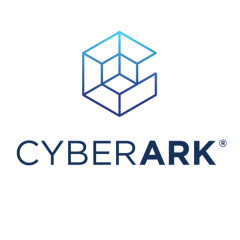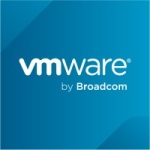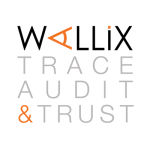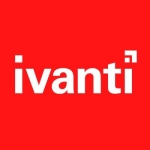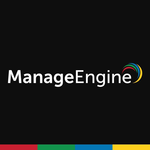What is our primary use case?
My primary use case for CyberArk Endpoint Privilege Manager is malware prevention. The solution enables malware detonation, which helps you solve ransomware problems. For example, suppose an unknown application comes into your environment, and you have installed a CyberArk Endpoint Privilege Manager agent. In that case, the solution will filter the unknown traffic from an unknown publisher and stop it from infiltrating. The solution dashboard also lets you know that specific software is suspicious. Still, it depends on the category, but malware prevention is one use case of CyberArk Endpoint Privilege Manager.
Classifying a trusted or whitelisted application is also a use case of the solution.
Another use case of CyberArk Endpoint Privilege Manager is stopping credential theft. For example, you have credential stores all around, whether you know it or not. You have credential stores in web browsers like Chrome and Microsoft Edge. The solution protects you against an attacker that has already gained access to your environment, an internal person that leverages your system and wants to go to your web browser, or probably there's a browser path attack where the person has access to your browser. He can check your credential store, but if CyberArk Endpoint Privilege Manager is in place, that situation will be prevented.
Just-In-Time Access is another use case of the solution. For example, there's no administrator privilege on the system, but let's say a database administrator or application administrator wants to use the credential. You can provide that person with Just-In-Time Access so he can use the credential for thirty minutes, then that credential expires once the time is up.
CyberArk Endpoint Privilege Manager also separates the privileges. For example, a team of application managers receives access to specific software that the network team can't access.
What is most valuable?
CyberArk Endpoint Privilege Manager is very easy to manage, which I like.
I also found credential detection the most valuable feature of the solution. For example, if I put a credential on my desktop and name the file administrator credential, and a person has access to my system and clicks the file under the history section of the system to steal the credential, CyberArk Endpoint Privilege Manager will flag that activity.
The solution also has a dashboard where you can see which software is suspicious, which I find valuable.
Other valuable features of CyberArk Endpoint Privilege Manager include application whitelisting and Just-In-Time Access.
What needs improvement?
CyberArk Endpoint Privilege Manager is a perfect solution, but CyberArk Endpoint Privilege Manager for Linux has many issues. One issue I observed while using it is that it needs to synchronize from an agent to a cloud because the agent does not update configurations or settings from the cloud. When I change some settings on the cloud, the changes don't synchronize into the system, and the policies won't come back unless I reinstall all the services. This is an area for improvement in CyberArk Endpoint Privilege Manager.
Another area for improvement in CyberArk Endpoint Privilege Manager, specifically for Windows, is that there's no way for you to check credential theft from a text file, such as a notepad file. Suppose I have a text file that contains passwords, for instance. In that case, I'm doing an application configuration that needs a password. CyberArk Endpoint Privilege Manager won't be able to help you locate that file, which means there's still an opportunity for an attacker to look into that text file and steal the passwords.
You can leverage the CyberArk Application Access Manager with CyberArk Endpoint Privilege Manager, but that aspect also needs improvement.
An additional feature I want to see in CyberArk Endpoint Privilege Manager is XDR, where you can trace how an attack can happen on an endpoint, how traffic was initiated, or if a person tried to access your computer and whether he was denied or allowed. CyberArk Endpoint Privilege Manager should be able to track such activities. The solution should allow you to see a specific event ID and use it to correlate whatever activity the malicious person was trying to do.
For how long have I used the solution?
I've been familiar with CyberArk Endpoint Privilege Manager for nearly two years, but I haven't been steadily working on it. For example, I've not worked with the solution for three months, then I'll work on it for two months, then I'll stop working with it again, but I'm very familiar with CyberArk Endpoint Privilege Manager.
I last worked with CyberArk Endpoint Privilege Manager three months ago.
What do I think about the stability of the solution?
CyberArk Endpoint Privilege Manager is stable, particularly for the Windows version, not the Linux version. The solution is an eight out of ten for me, stability-wise.
How are customer service and support?
I've contacted CyberArk Endpoint Privilege Manager technical support, and I'd rate support as seven out of ten.
Response time is three out of five.
Regarding how knowledgeable the level one support of CyberArk Endpoint Privilege Manager is, it always seems like the support person doesn't know what he's doing. I've already done what he was asking me to do. I'm not a CyberArk Endpoint Privilege Manager novice, so support is frustrating and a waste of time. Though the issue will be resolved eventually, CyberArk Endpoint Privilege Manager has already wasted my time, and that's uncool.
How would you rate customer service and support?
Which solution did I use previously and why did I switch?
CyberArk Endpoint Privilege Manager is the best solution. However, One Identity Safeguard is trying as a solution, and it has special features which make it almost equal to CyberArk Endpoint Privilege Manager. Still, CyberArk Endpoint Privilege Manager is the best.
CyberArk has been in the market for a long time and keeps improving. CyberArk Endpoint Privilege Manager has a hundred percent effectiveness against ransomware, which you can't get anywhere. The CyberArk team researched and knows the angle, the flaws, and the central point of attack. An attacker usually infiltrates or compromises your system by elevating the credentials or permissions and then leveraging that elevation to compromise the system. CyberArk Endpoint Privilege Manager removes User Access Control on the endpoint, so it takes away the attacker's means to elevate permissions, so CyberArk Endpoint Privilege Manager is simply the best.
How was the initial setup?
Setting up CyberArk Endpoint Privilege Manager was pretty straightforward.
What's my experience with pricing, setup cost, and licensing?
CyberArk Endpoint Privilege Manager has a very high price, so it's a one out of ten for me in terms of pricing.
What other advice do I have?
I've used CyberArk Privileged Access Manager and One Identity Safeguard. I also have experience with CyberArk Endpoint Privilege Manager, One Identity Safeguard for Privileged Passwords, and One Identity Safeguard for Privileged Sessions.
CyberArk Endpoint Privilege Manager is cloud-based, but its agent is on-premises. The on-premise version is no longer supported, but it will still be supported if you're an old customer with an on-premise version. However, by 2024, CyberArk will no longer support the on-premises version of CyberArk Endpoint Privilege Manager.
Right now, there's no CyberArk Endpoint Privilege Manager within my company. I created quotes for customers to try the solution, but it's expensive. I just gathered my colleagues to simulate my use cases, and that's it.
What I'd tell others about CyberArk Endpoint Privilege Manager is that if you have the budget, you definitely should get it. The solution is excellent, and it's as if you're insured because CyberArk Endpoint Privilege Manager provides security. This is the advice I'd give anyone trying to implement CyberArk Endpoint Privilege Manager.
I'm rating the solution as seven out of ten because there's room for improvement in the Linux version, and the pricing needs to be more flexible.
My company is a CyberArk partner.
Which deployment model are you using for this solution?
On-premises
Disclosure: My company has a business relationship with this vendor other than being a customer. Partner

